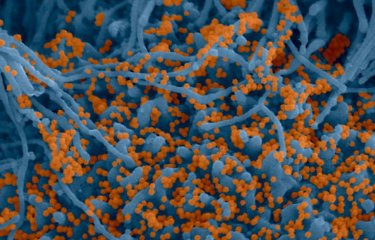-
News | 2020.06.24
Genetic cause of difference in sexual development uncovered
Researchers at the Francis Crick Institute, the Institut Pasteur and their clinical collaborators have identified a cause of testicular tissue developing in people with female chromosomes.“Differences in sexual development” (DSD) are genetic conditions in which there is a mismatch between the chromosomal sex, XY or XX, which are typically of males and females, and some aspect of their anatomy,...
-
News | 2020.07.03
Existing drugs can prevent SARS-CoV-2 from hijacking cells
Researchers evaluate how the new coronavirus rewires human proteins for its own replication, and identify several antiviral drugs ready for clinical trials.To sum up:An international team of researchers has analysed how SARS-CoV-2, the virus that causes COVID-19, hijacks the proteins in its target cells.The research shows how the virus shifts the cell’s activity to promote its own...
-
News | 2020.07.06
Hepatitis B: natural controllers shed light on immunity mechanisms
Infections in humans caused by the hepatitis B virus (HBV) represent a major public health problem. Despite the availability of effective protective vaccines, more than 250 million individuals worldwide are chronically infected according to WHO estimates. HBV infection is associated with cirrhosis, liver failure and hepatocellular carcinoma, responsible for approximately a million deaths every...
-
News | 2020.07.07
Using medicinal chemistry to improve diagnostic methods
Aptamers are DNA or RNA molecules that can bind with high affinity and/or specificity to target molecules. Given their properties, aptamers offer numerous advantages for diagnostic, biodetection and nanotechnology applications. However, aptamers being made of natural nucleic acids suffer from certain limitations. For instance, they are rapidly degraded when directly injected into patients, and...
-
Article | 2020.07.07
Modeling human SARS-CoV-2 infection in mice with human lung xenografts
To date there is no specific therapeutic treatment or vaccine for COVID-19 caused by the SARS-CoV-2 virus and relevant animal models that mimic human COVID-19 pathologies are lacking. We will generate two novel humanized mouse models: HuLung mice (human lung) and HIS-HuLung mice (and human immune system and human lung). Infection of HuLung and HIS-HuLung mice with SARS-CoV-2 will provide an in...
-
Article | 2020.07.07
Neurological implications of SARS-COV-2 infection – a transversal study
Aim: The infection of the nasal mucosa and the lungs by CoV-2 may spread to the CNS, including the brainstem, thereby playing a potential key role in the severe respiratory distress observed in COVID-19. Although several clinical observations support this hypothesis, the knowledge in this field is very limited. To fill this gap, we will investigate CoV-2 neuroinvasion in humans, animal models,...
-
Article | 2020.07.07
Identification of cellular PDZ-containing Proteins targeted by the virus SARS-Cov-2 during infection
Aim: The PDZ-binding motifs of two viral proteins play an important role in virus replication and pathogenesis of SARS-CoV. Through in vitro and cellular high-throughput assays, this project aims to identify the cellular PDZ-containing proteins targeted by these two viral proteins during infection and to characterize the mechanism whereby the viral sequences compete with cellular PBM-PDZ...
-
Article | 2020.07.07
Short Amplicon Based Sequencing Of SARS-CoV-2 for low-input samples
Aim: Viral genomic is a key tool during outbreak response such as the SARS-CoV-2 emergence. However, sequencing can be challenging due to samples quality or low ratio of viral to host RNAs. This short technical project will implement and optimize a short amplicon-based approach tailored to SARS-CoV-2 and able to process low-quality and low-input clinical samples.
-
Article | 2020.07.07
LuLISA project, bioluminescence as a tool for human diagnostics, from allergy to Covid19
LuLISA project, bioluminescence as a tool for human diagnostics, from allergy to Covid19
-
Article | 2020.07.07
CEPI collaborates with the Institut Pasteur in a consortium to develop Covid-19 vaccine
CEPI collaborates with the Institut Pasteur in a consortium to develop Covid-19 vaccine


